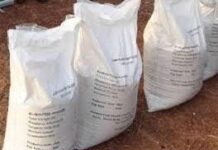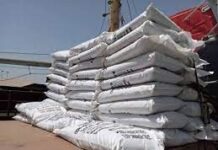 security in the Gambia, as well as the interventions of the Government and Non-governmental Organizations.
Farmers’ Eye has been touring the country and talking to the farming communities regarding their constraints and the way forward in ensuring food security in the Gambia. During these visits, the farmers have been unanimous in their comments that there cannot be food security in the Gambia without increased productivity which cannot be realised in the absence of farm implements, fertilizer and enough water for the crops together with processing and storage facilities.
In this edition, Farmers’ Eye will be publishing the views of the women horticultural farmers who were participants in a three day training conducted by Bakoto Mboge and team at Nyangen Processing Factory funded by the Forest and Farm Facility project.
However, it is important to note that the Agricultural and Natural Resource Policy indicates very clearly that horticulture is rapidly emerging as one of the key growth areas of The Gambian economy, and that the sector currently contributes about 4% to GDP on average and that over 65% of the agricultural labour force is involved in the sector.
According to the ANR Policy, Horticultural production is presently an established key source of rural income, employment and food, making significant contribution to food security and poverty alleviation.
It states that Horticultural crops include tomatoes, onions, cabbage, eggplant, okra, peppers, lettuce, cucurbits, carrots, beans, citrus fruits, mangoes, cashew, papaya, banana, cucumber and that these crops, especially vegetables, are grown in small plots by smallholder farmers on an individual basis and through communal gardens mainly managed by women.
The ANR Policy went further to state that Smallholder plots are found in gardens where the major source of water for irrigation is groundwater through shallow hand dug or concrete lined wells.
It also states that there are a few commercial horticultural enterprises such as Radville Farms and Gambia Horticultural Enterprise (GHE), as well as Gambia is Good, a non-profit horticulture marketing company and unique social business enterprise that link local farmers with the tourism market, managed by Concern Universal, an INGO.
According to the ANR Policy, nearly 88 percent of all women farmers in The Gambia are estimated to be engaged in individual or communal horticultural activities, which include the growing of perennial crops and that most of the vegetables are grown in the dry season (November to June) with limited yields and regard for quality.
However, the ANR Policy goes further to state that the gradual introduction of pest/disease and heat tolerant hybrid varieties is contributing to developing year round production.
Speaking at the opening of the three day training, the President of the Gambia National Farmers’ Platform, Alhagi Basse Mboge, noted that Forest and Farm Facility (FFF) supports the Gambia and promotes cross- sectoral coordination through the Agriculture and Natural Resources Platform and Working Group, enhances the organization and capacity of local Forest and Farm community’s livelihoods alongside fostering an integrated approach towards forest landscape management.
He noted that due to the high rate of loss suffered by the horticultural farmers as a result of post-harvest loss caused by lack of storage and processing facility and skill, Farmers’ Eye, through the funding of Forest and Farm Facility (FFF), is conducting training to remedy the situation.
See part two for the views of the participants
]]>
security in the Gambia, as well as the interventions of the Government and Non-governmental Organizations.
Farmers’ Eye has been touring the country and talking to the farming communities regarding their constraints and the way forward in ensuring food security in the Gambia. During these visits, the farmers have been unanimous in their comments that there cannot be food security in the Gambia without increased productivity which cannot be realised in the absence of farm implements, fertilizer and enough water for the crops together with processing and storage facilities.
In this edition, Farmers’ Eye will be publishing the views of the women horticultural farmers who were participants in a three day training conducted by Bakoto Mboge and team at Nyangen Processing Factory funded by the Forest and Farm Facility project.
However, it is important to note that the Agricultural and Natural Resource Policy indicates very clearly that horticulture is rapidly emerging as one of the key growth areas of The Gambian economy, and that the sector currently contributes about 4% to GDP on average and that over 65% of the agricultural labour force is involved in the sector.
According to the ANR Policy, Horticultural production is presently an established key source of rural income, employment and food, making significant contribution to food security and poverty alleviation.
It states that Horticultural crops include tomatoes, onions, cabbage, eggplant, okra, peppers, lettuce, cucurbits, carrots, beans, citrus fruits, mangoes, cashew, papaya, banana, cucumber and that these crops, especially vegetables, are grown in small plots by smallholder farmers on an individual basis and through communal gardens mainly managed by women.
The ANR Policy went further to state that Smallholder plots are found in gardens where the major source of water for irrigation is groundwater through shallow hand dug or concrete lined wells.
It also states that there are a few commercial horticultural enterprises such as Radville Farms and Gambia Horticultural Enterprise (GHE), as well as Gambia is Good, a non-profit horticulture marketing company and unique social business enterprise that link local farmers with the tourism market, managed by Concern Universal, an INGO.
According to the ANR Policy, nearly 88 percent of all women farmers in The Gambia are estimated to be engaged in individual or communal horticultural activities, which include the growing of perennial crops and that most of the vegetables are grown in the dry season (November to June) with limited yields and regard for quality.
However, the ANR Policy goes further to state that the gradual introduction of pest/disease and heat tolerant hybrid varieties is contributing to developing year round production.
Speaking at the opening of the three day training, the President of the Gambia National Farmers’ Platform, Alhagi Basse Mboge, noted that Forest and Farm Facility (FFF) supports the Gambia and promotes cross- sectoral coordination through the Agriculture and Natural Resources Platform and Working Group, enhances the organization and capacity of local Forest and Farm community’s livelihoods alongside fostering an integrated approach towards forest landscape management.
He noted that due to the high rate of loss suffered by the horticultural farmers as a result of post-harvest loss caused by lack of storage and processing facility and skill, Farmers’ Eye, through the funding of Forest and Farm Facility (FFF), is conducting training to remedy the situation.
See part two for the views of the participants
]]>
FOREST AND FARM FACILITY TRAINED WOMEN ON PROCESSING
Facebook Notice for EU!
You need to login to view and post FB Comments!





















